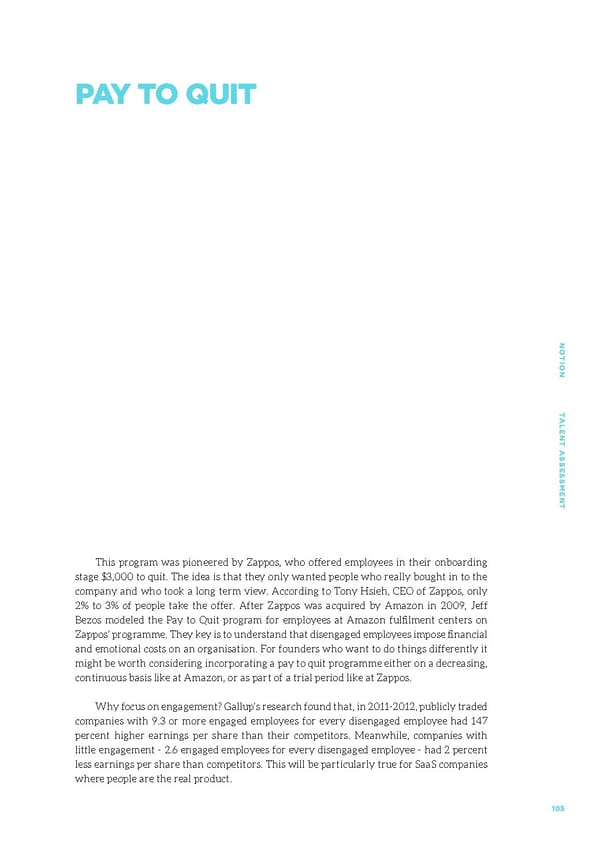PAY TO QUIT NONO TION TTION T ALENT AALENT A SS SESSES SMENTSMENT This program was pioneered by Zappos, who offered employees in their onboarding stage $3,000 to quit. The idea is that they only wanted people who really bought in to the company and who took a long term view. According to Tony Hsieh, CEO of Zappos, only 2% to 3% of people take the offer. After Zappos was acquired by Amazon in 2009, Jeff Bezos modeled the Pay to Quit program for employees at Amazon fulfilment centers on Zappos’ programme. They key is to understand that disengaged employees impose financial and emotional costs on an organisation. For founders who want to do things differently it might be worth considering incorporating a pay to quit programme either on a decreasing, continuous basis like at Amazon, or as part of a trial period like at Zappos. Why focus on engagement? Gallup’s research found that, in 2011-2012, publicly traded companies with 9.3 or more engaged employees for every disengaged employee had 147 percent higher earnings per share than their competitors. Meanwhile, companies with little engagement - 2.6 engaged employees for every disengaged employee - had 2 percent less earnings per share than competitors. This will be particularly true for SaaS companies where people are the real product. 105105
 Talent Assessment for Growth Startups Page 101 Page 103
Talent Assessment for Growth Startups Page 101 Page 103